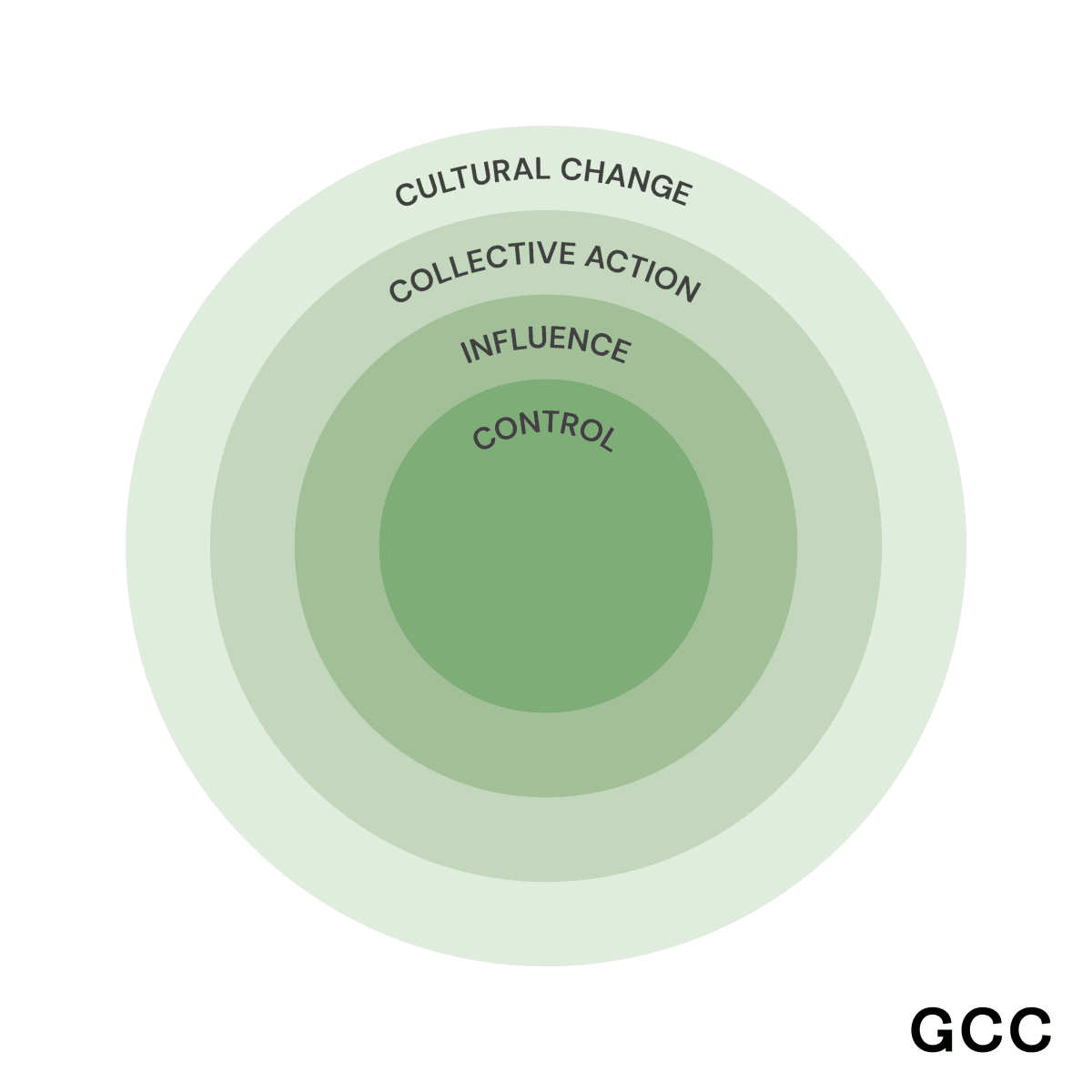Spheres of Impact: A Guide for Artists
In the face of the daunting climate crisis, it's easy to feel overwhelmed. Issues like our global reliance on fossil fuels loom large, making individual efforts feel futile in comparison. However, change isn’t solely dependent on addressing these big challenges, nor is it only about smaller scale individual adjustments. Instead, it is about embracing a “both, and” approach. We need the big changes, the smaller changes, and more.
This is where the concept of “spheres of impact” comes into play. Artists have unique areas in which they can effect change in all sorts of ways, whether through creative practice, advocacy efforts, or choices in materials. By identifying and leveraging these spheres, artists can play a meaningful role in addressing the climate crisis and creating an environmentally responsible art world.
Sphere of Control
The areas within your direct control. Take action on the things you can influence directly.
-
Materials: Choose sustainable, non-toxic, and recycled materials for your art.
-
Production: Optimise your processes to minimise waste and energy consumption.
-
Travel: Consider low-carbon modes of transportation to and from your studio.
Sphere of Influence
The areas in which you may not have direct control, but where you can exert influence. See our Environmental Responsibility Rider Template to help formulate and communicate your ideas for this sphere.
-
Galleries and institutions: Advocate for sustainable practices in the galleries that exhibit your work.
-
Framers and Fabricators: Encourage the use of environmentally friendly materials and methods.
-
Funders and Collectors: Highlight the importance of environmental responsibility to those who support and purchase your work.
Sphere of Collective Action
These are areas that are challenging to influence alone. Look for networks, collectives, and collaborations to push for broader changes.
-
Government Grants and Incentives: Advocate for policies and funding that support the decarbonisation of the art sector.
-
Art Sector Standards: Work with others to establish and promote industry-wide sustainability standards.
-
Legal Frameworks: Support and engage in initiatives aimed at creating legal frameworks that promote environmental responsibility.
Sphere of Cultural Change
Artists can play a crucial but often hard-to-measure role by engaging audiences and influencing broader cultural and societal norms. See our advice on advocacy and activism for further ideas and support.
-
Engagement: Use your art to raise awareness and inspire action on environmental issues.
-
Influence: Shape cultural attitudes and behaviours towards sustainability through your creative work and public presence.
By identifying your spheres of impact and taking action within each, you can contribute meaningfully to the fight against the climate crisis. Whether through your direct actions, your influence on others, your participation in collective efforts, or your cultural contributions, every step you take matters. Together, these efforts can add up to significant change.
For more advice on the points raised here, see GCC’s Artist Toolkit.

